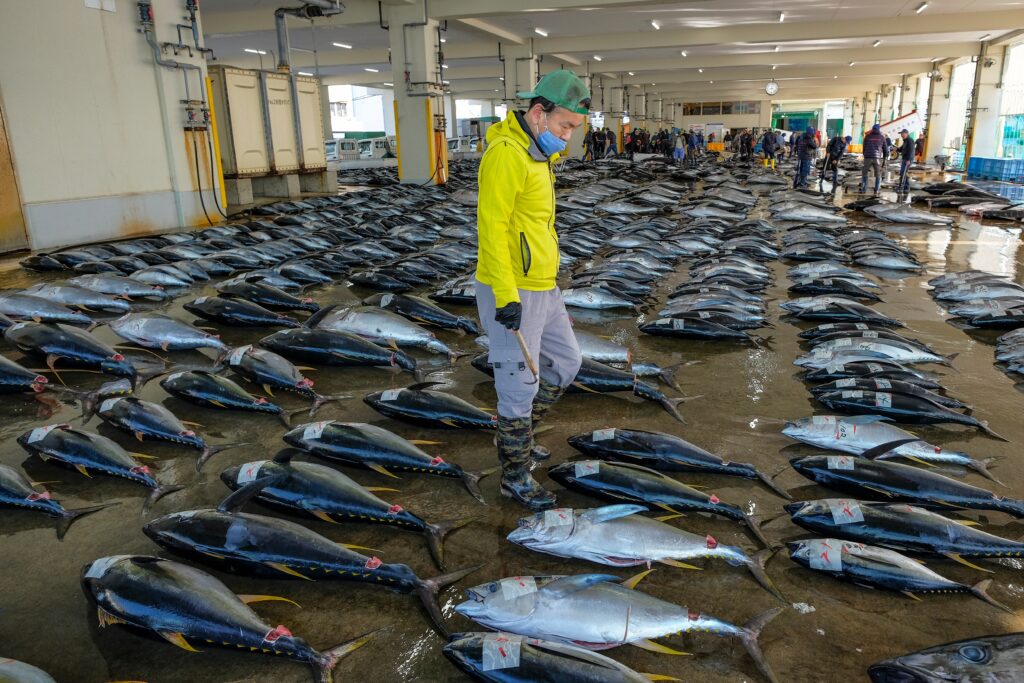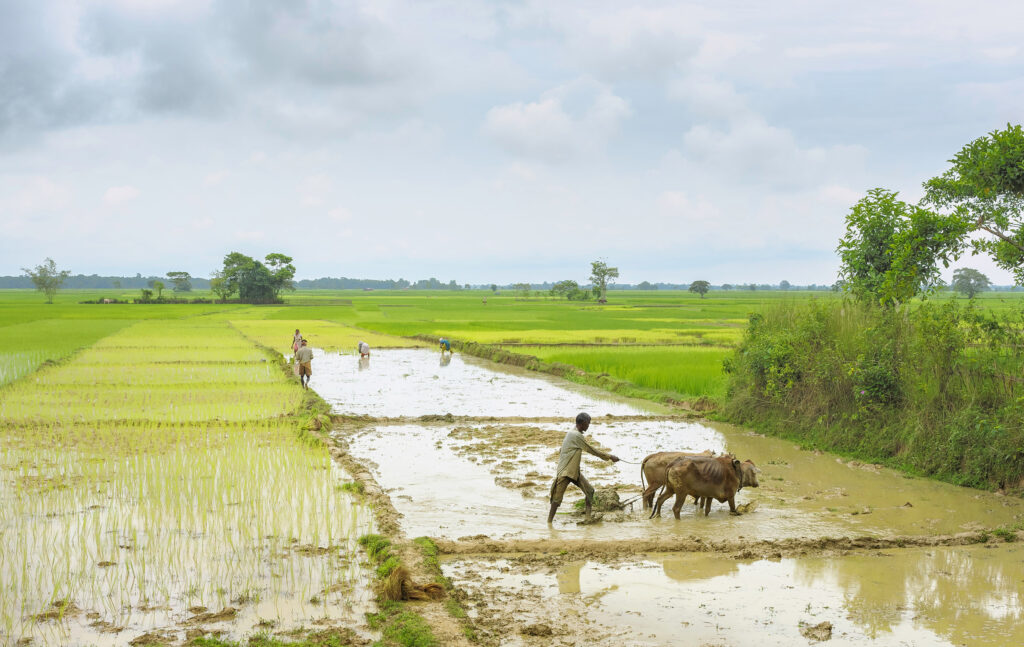“We are not here to talk about despair; we are here to talk about solutions” – it is hard to imagine that these words would come from someone on a mission to restore the rapidly melting Arctic sea ice – a challenge few deem possible. Yet, the words of Tom Meijeraan, Co-founder and COO of the impact-driven startup Arctic Reflections, on the Climate Change Summit 2024 stage were yet another proof that we have solutions to even the most complex problems.
While the planet is warming at an unprecedented rate, the temperatures in the Arctic are rising two to four times faster than the global average, with some estimates pointing to a temperature increase of up to 4°C over the past three decades.
According to Meijeraan, this has a devastating impact on ice sheets and sea ice. He pointed out that the 7 million sq. km of sea ice sheet cover we had in the 1980s is now down to 4 million sq. km and thinner.
“In the most optimistic IPCC scenario, we will witness the first ice-free summer in the Arctic Ocean in the 2030s or 2040s. This would be the first time in more than 100,000 years that there will be no ice,” Meijeraan shared, casting silence across a room of concerned faces trying to comprehend the stark reality.
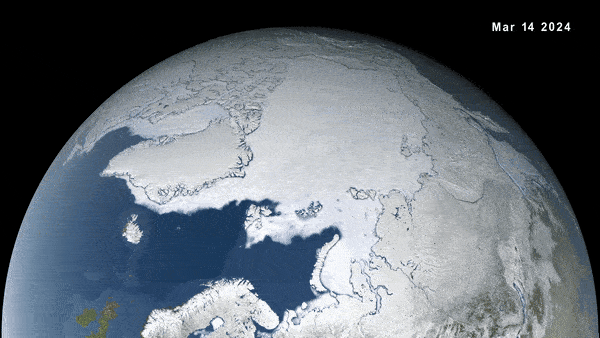
‘The Arctic Isn’t Las Vegas’
“What happens in the Arctic doesn’t stay in the Arctic,” Meijeraan answered his own question about why the issue should concern us all.
The reason, he explained, was the vital role of sea ice, which works as “the refrigerator of the world.” Its natural white surface reflects up to 90% of the solar energy, known as the “Albedo effect.” However, as the world warms, the Arctic’s function as a regulator of global temperature will weaken. For example, an ice-free summer, which we expect to see for the first time in the next two decades, risks creating a self-reinforcing feedback loop. Since the ice sheets won’t be able to reflect the heat and energy of the sun, it will have to be absorbed by the ocean, further increasing its temperature and accelerating the melting of the remaining ice.
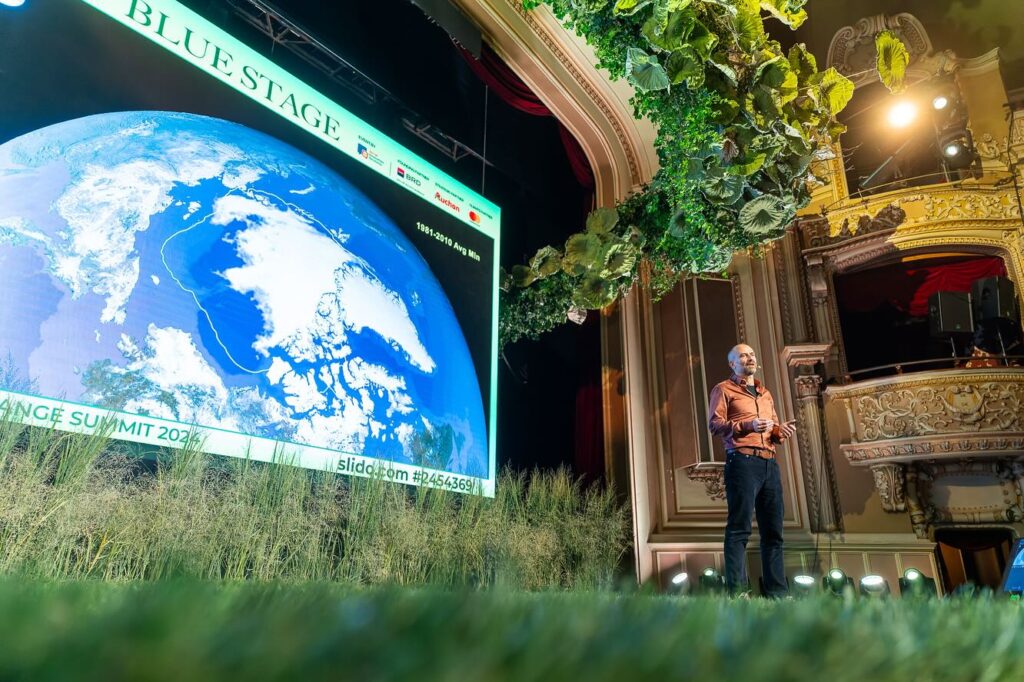
This could significantly exacerbate the exponential rise in ocean temperatures in recent years. According to NASA, 90% of global warming occurs in the ocean. UNESCO’s State of the Ocean Report 2024, a detailed analysis created by over 100 scientists from nearly 30 countries, finds that the rate of ocean warming doubled in 20 years. In 2023 alone, it increased by 0.25°C compared to 2022, equalling about two decades’ worth of warming.
According to scientists, climate change happens too quickly for nature to adapt, leading to devastating consequences for marine ecosystems, including coral and wildlife.
Ocean temperature increase and global warming aside, the amplification of melting can have a domino-like effect, triggering devastating feedback loops.
“The disappearance of the sea ice and warming of the Arctic region will lead to a less stable Polar Vortex, the weakening of which will cause even more extreme weather events than we are already experiencing. Also, the melting of the permafrost leads to methane releases, a very powerful greenhouse gas, leading to even more global warming,” explained Meijeraan in an interview for Climate Impacts Tracker.
In fact, according to scientists, the permafrost holds over twice as much carbon as is already present in the atmosphere.
However, these are just the direct consequences. The accelerated melting of Arctic ice can indirectly impact sea levels. According to UNESCO, the rate of sea level rise doubled in 30 years. In fact, this summer, Svalbard’s glaciers in Norway reportedly melted at the fastest rate in history, with ice deteriorating up to five times more than usual on some days.
“The melting of the Arctic ice sheet doesn’t directly impact the sea level, as the ice is already in the ocean. However, the melting of the Arctic ice can indirectly cause the Greenland glaciers to melt faster,” explains Meijeraan. “Studies show that ice on land and ocean surfaces are intimately related. Less ice means a warmer ocean, which will increase the melting of glaciers. Also, as the sea ice retreats from marine-terminating glaciers, the glacier may flow faster into the ocean. And the melting glaciers do lead to rising sea levels.”
Asked what this would mean for Asia, Meijeraan says that while his team doesn’t specialise in rising sea levels, scientific evidence suggests that low-lying coastal cities like Dhaka, Jakarta, Ho Chi Min and Bangkok will be severely impacted. Estimates reveal that over 450 million people in the region live in such areas and will be affected by rising sea levels due to melting ice. In fact, according to studies, Southeast Asian coastal cities are sinking the fastest globally.
From Ice Skating to Restoring Arctic Sea Ice
“In the Netherlands, climate change has made it increasingly rare to skate on natural ice,” said Meijeraan on stage. While this might not seem like the world’s most pressing problem, it has sparked the idea of a potential solution to one of humanity’s biggest threats. Watching Dutch ice meisters apply water on top of the ice of skating rings so that it thickens and strengthens when temperatures get below zero inspired the Arctic Reflections team to try the same approach to reverse the rapid loss of Arctic sea ice.
The process, which Meijeraan describes as “surprisingly simple,” has been used for decades to create ice roads and is considered the ice equivalent of reforestation. It includes pumping seawater on top of the Arctic ice sheets during winter. Under extreme temperatures, the water freezes rapidly, thickening and strengthening the ice. As a result, it has a higher chance of surviving the warm summer months.
Following laboratory tests at Delft University and a field test in the Svalbard archipelago in the Arctic, the Arctic Reflections team made major findings, published in a special research summary.
First, they found that the temperature of the thickened ice remained colder than that of the non-thickened one. Next, the melting rate of the thickened ice was similar to the melting rate of regular ice. As a result, the thickened ice would remain longer than non-thickened ice – if no boundary effects took place. Lastly, the thickened ice had a higher albedo, meaning it reflected more solar energy.
In addition, the researchers found that the Arctic ice thickening process has proven very efficient. According to their estimates, due to the longer lifetime, the thickened ice would be able to reflect about 1000 times the energy needed to pump the water and start the process.
After the promising results, Arctic Reflections set an ambitious goal. Since the annual Arctic ice sheet decrease over the past decade was between 80,000 and 100,000 sq. km, the team now wants to thicken 100,000 sq. km of ice each year – an area roughly 2.5 times the size of the Netherlands.
“It might sound a lot, but it isn’t,” Meijeraan says. Yet, according to him, succeeding would have a significant positive impact.
“Increasing the thickness of the ice from 30 to 75 cm, for example, would extend the life of the ice with one extra month in the summer. Making one sq. km of ice last a month longer can have the same cooling impact as removing one kilotonne of CO2 equivalent per sq. km over a 20-year period,” he said.
The Arctic Reflections team considers restoring the natural solar radiation reflectivity of ice a potential way to provide the world with some “breathing space” to slow climate change’s impacts until we reduce our CO2 emissions.
“The solution provides a very much-needed immediate cooling impact. In that sense, we think stopping the current decline of the Arctic sea ice will help mitigate worst-case scenarios in Asia,” explains Meijeraan.
In fact, according to a 2022 study by Chinese scientists published in the Atmospheric and Oceanic Science Letters, variations in the Arctic sea ice levels around the Svalbard archipelago, the location for Arctic Reflections’ first field test, can influence Southeast Asia’s seasonal weather and drought patterns, including leading to drier and hotter conditions. Furthermore, in a separate study, scientists from the University of Bergen have identified shrinking Arctic sea ice as a reason for regions like East Asia experiencing unusually harsh winters.
Funding and Scaling Up the Technology Crucial For Preserving Arctic Sea Ice
For a long time, oceans have been the world’s “get-out-of-jail card” when it comes to climate change since they absorb around 25% of the CO2 that we emit. However, as the sea ice is rapidly collapsing and oceans warm, the evidence that they are struggling to cope is mounting.
“The harsh reality is that if we don’t intervene, the summer arctic sea ice will almost certainly disappear within our lifetimes. Reducing CO2 alone is not enough anymore,” warns Meijeraan.
According to the IPCC, with the current growth of CO2 emissions and depending on the levels we manage to limit global temperature increase to, recovering Arctic sea ice to even today’s conditions (if temperatures return to 1°C) would take over 1,000 years.
Asked what more needs to be done beyond emissions reduction to protect vulnerable regions and communities like those in Asia, Meijeraan refers to Sir David King’s approach and the “3 Rs” strategy: reduce, remove and repair.
“Besides reducing CO2 emissions, we should remove CO2 that is already in the atmosphere and repair broken parts of the climate system, starting with the Arctic. We can add a fourth ‘R’ for ‘resilience’, meaning we should focus on preparing cities for future sea level rise, for example.”
While the initial results look promising, the Arctic Reflections team can’t solve the looming crisis on their own, and their efforts need support.
“The technology is proven already, but as with any sustainable initiative, funding remains a challenge. Governments and investors can help stop the decline of sea ice and reduce the impact of these devastating feedback loops by providing financial aid – just like governments allocate funds for nature restoration on land and investors invest in land-based reforestation projects.”
He also urges a more collaborative approach where the best minds in science, engineering, and environmental conservation team up to find solutions to humanity’s most pressing problems.
“Let us stay away from polarising and start polar icing. It’s way too important to give up.”
Viktor Tachev
Writer, Bulgaria
Viktor is a writer that specialises in green finance and ESG investment practices. He holds a Master's degree in financial markets and has over a decade of experience working with companies in the finance industry, along with international organisations and NGOs. Viktor is a regular contributor to several publications and comments on the likes of sustainability and renewable energy.
Viktor is a writer that specialises in green finance and ESG investment practices. He holds a Master's degree in financial markets and has over a decade of experience working with companies in the finance industry, along with international organisations and NGOs. Viktor is a regular contributor to several publications and comments on the likes of sustainability and renewable energy.

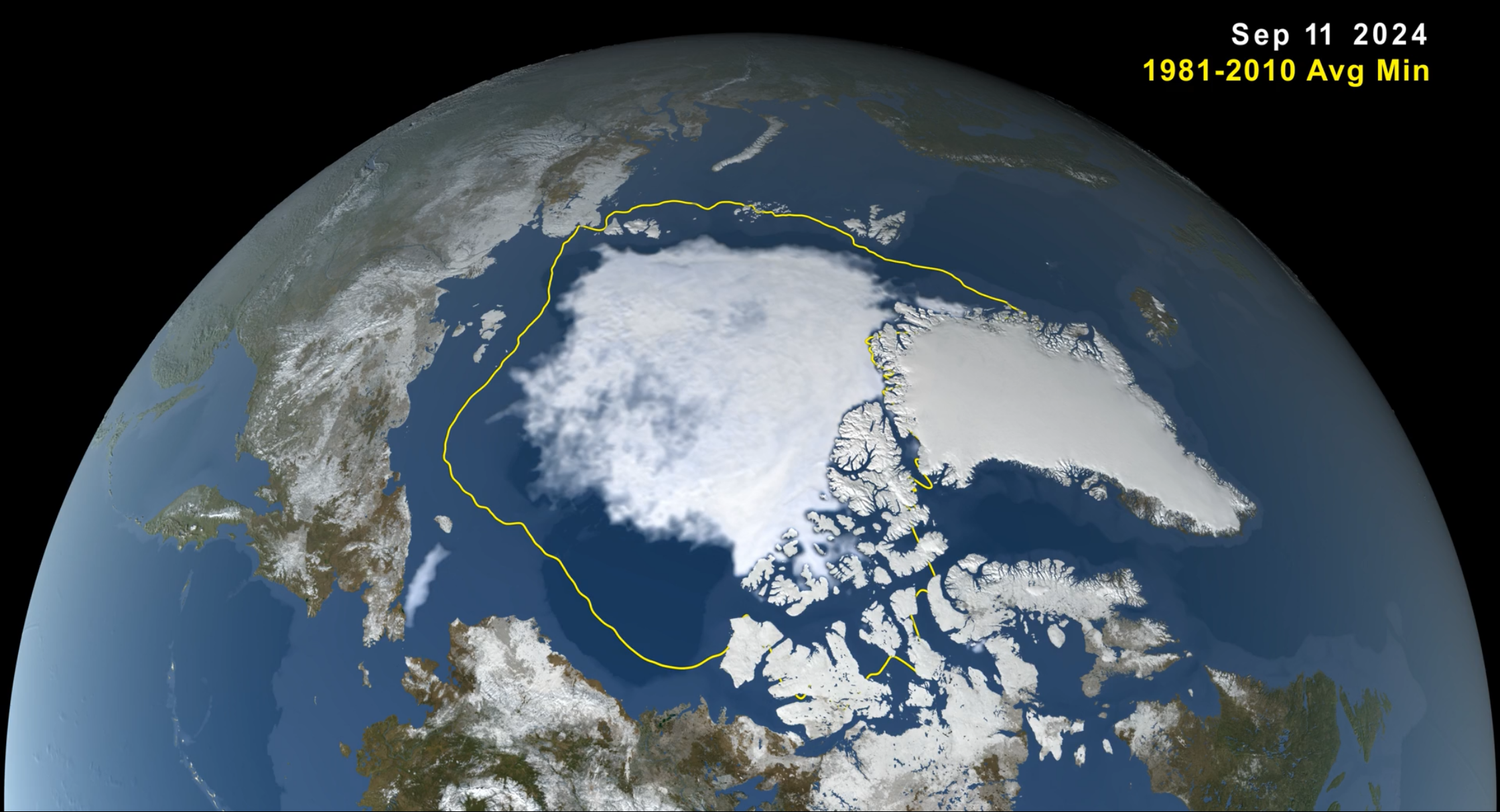


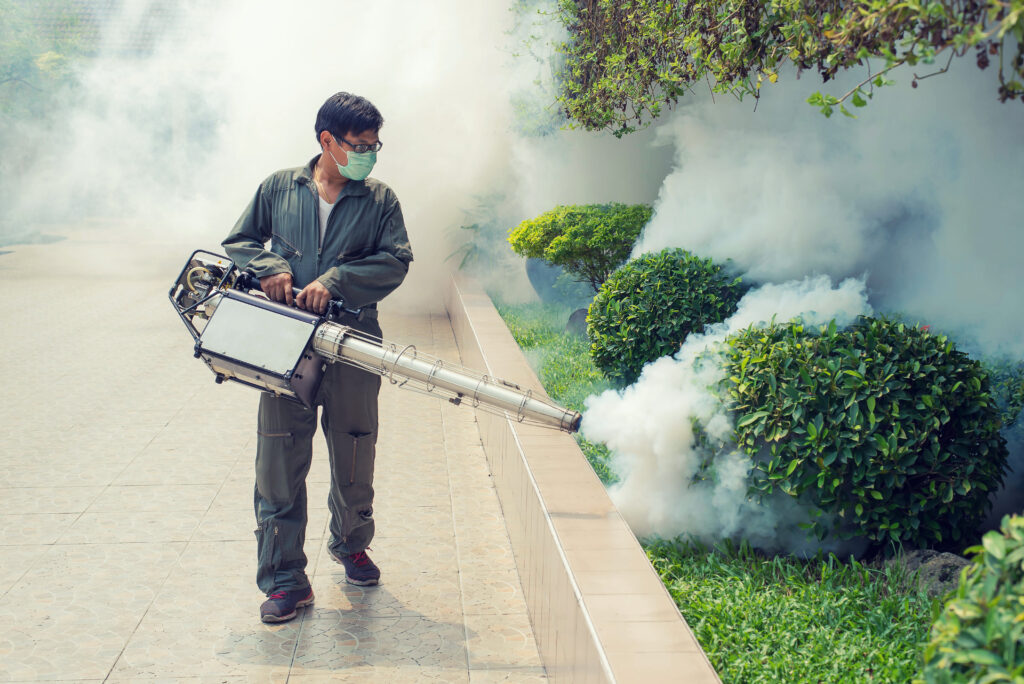
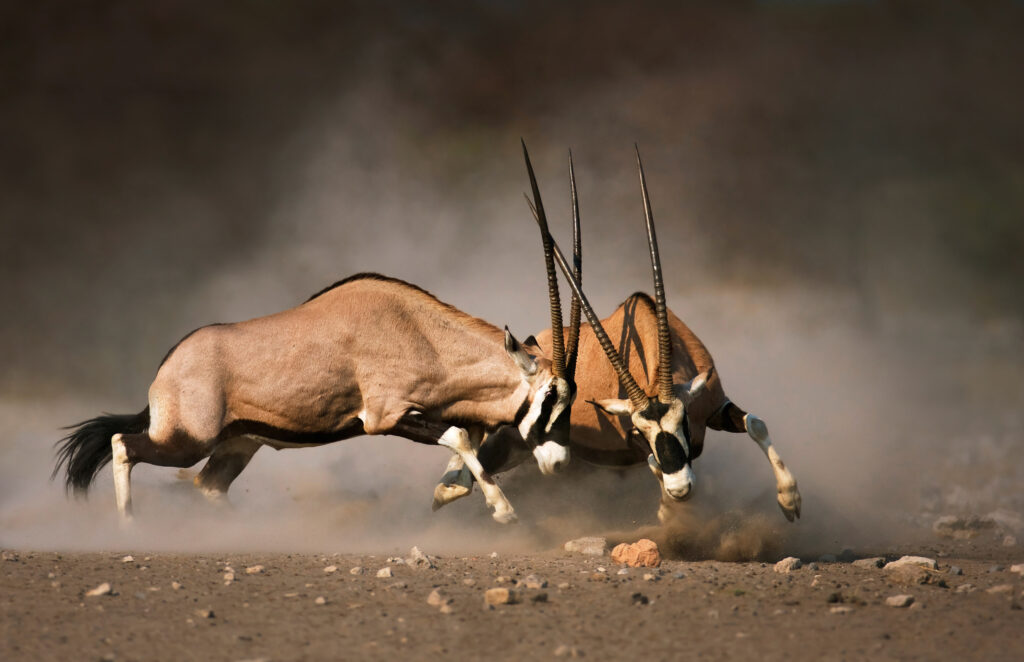
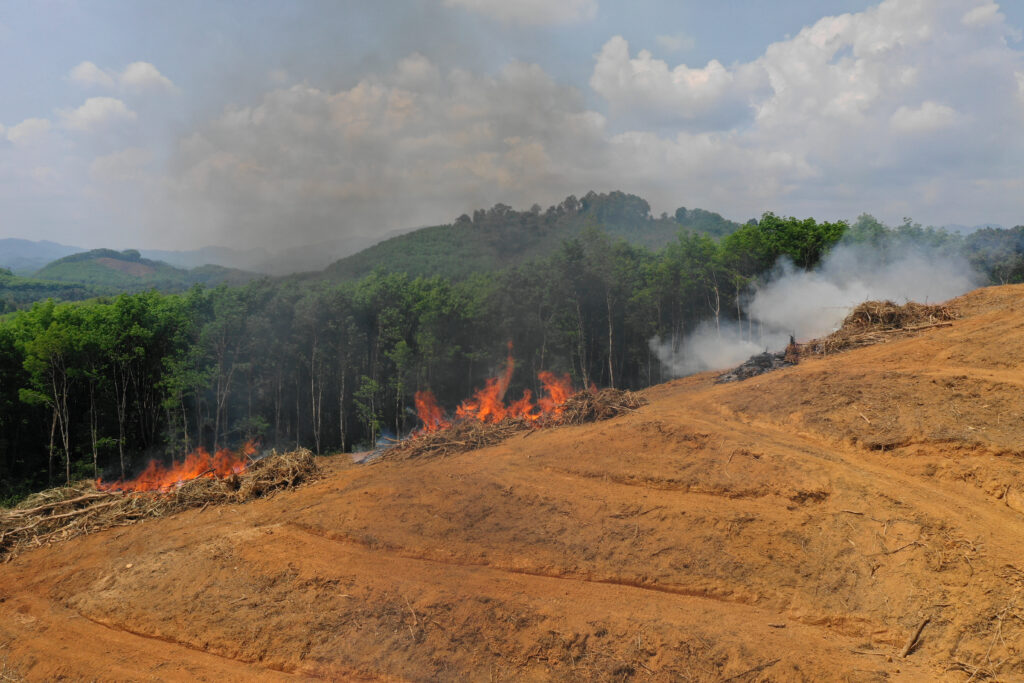
![Central Asia’s Vanishing Snowpack: A Real-Time Crisis Unfolding in 2025 [Op-Ed]](https://www.climateimpactstracker.com/wp-content/uploads/2025/10/shutterstock_2680425247-1024x576.jpg)
